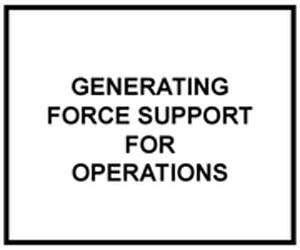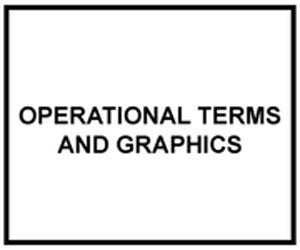
FM 3-90.12: COMBINED ARMS GAP-CROSSING OPERATIONS
Official US Army Field Manual in Acrobat PDF file format.
The doctrine of gap-crossing operations focuses on the support provided by engineer and other capabilities to the combined arms team that enhances mobility of the force by projecting elements across an obstacle, wet or dry, in support of assured mobility. It is also applicable to joint, interagency, or multinational forces and is specifically written as a dual manual between the United States (U.S.) Army and the U.S. Marine Corps (USMC). Although other branches contribute to gap-crossing operations and are included in the discussions, this manual focuses on the engineer contribution to gap-crossing operations, while acknowledging the significant role of other branches and capabilities. This manual follows the principles and tenets found in Field Manual (FM) 3-90, FM 3-34, and FM 3-34.2 that continues the discussion of mobility and gap-crossing operations. It recognizes the contribution of the entire combined arms team to gap-crossing operations and the multi-Service capabilities that exist to support gap-crossing operations at both the tactical and operational levels. Finally, it addresses the specifics associated with gap crossing in support of combat maneuver and line of communications (LOC) gap crossing, integrating the considerations created by the significant changes to doctrine and force structure that have occurred since FM 90-13 was published in 1998.
This FM is the tactical commander’s and engineer staff planner’s manual and primary resource for understanding gap-crossing operations. This manual follows the mobility concepts and fundamentals outlined in FM 3-34.2 and is intended for use by commanders and their staff at both the operational and tactical levels. It relates the engineer-focused aspects of gap crossing to the functional area of combined arms mobility operations, incorporating new concepts associated with the expansion of the existing Army task (ART) Conduct Gap-Crossing Operations and the advent of the modular force structure.
FM 3-90.12 provides detailed guidance on integrating gap crossing into mobility operations. As a functional area of mobility operations, it describes the fundamentals and considerations necessary for the proper planning and execution of the two major types of gap-crossing support (combat maneuver and LOCs). This manual discusses the following:
• Chapter 1 defines gap crossing and how it supports mobility operations within the framework of assured mobility.
• Chapter 2 provides an overview of gap-crossing operations by providing the definitions, fundamentals, and considerations necessary to understand the concept of gap crossing.
• Chapter 3 focuses on planning considerations that should be considered during tactical and operational level planning.
• Chapter 4 goes into depth on how gap crossing supports combat maneuver at the division, brigade combat team (BCT), and lower levels.
• Chapter 5 provides an insight on how gap crossing supports the establishment or maintenance of LOCs.
• Chapter 6 provides selected special planning and when conducting gap-crossing operations in special environments and situations.
• Appendix A describes crossing means that are most commonly used by Army and Marine forces.
• Appendix B provides the planner with some considerations to assist in evaluating potential crossing sites for gap-crossing operations.
• Appendix C provides information about specific procedures, conditions, and factors that can impact a gap-crossing operation.
• Appendix D addresses detailed engineer planning necessary for a wet-gap-crossing operation.
• Appendix E discusses the specialized tasks that divers perform in support of wet-gap crossing.
• Appendix F describes the tactics and techniques used by a division or BCT in a retrograde gap-crossing operation that differ from those used in an offensive crossing.
• Appendix G discusses gap-crossing security considerations.
• Appendix H provides descriptions of some common foreign bridging resources.
The primary audience for FM 3-90.12 is the task force (TF) and above maneuver commander and supporting staff. This also includes nonorganic unit commanders and staffs that will support brigade and above maneuver organizations. This doctrine will assist Army branch schools in teaching the integration of engineer capabilities into Army operations as well as the combined arms roles and responsibilities in regards to gap-crossing operations.
Engineer involvement is critical to most gap-crossing operations. The degree of involvement will include all of the essential tasks for mobility, countermobility, and survivability (M/CM/S) performed by engineers and others with focus on mobility operations. FM 3-90.12 is intended to inform all Service components of the types and complexity of gap-crossing operations and the capabilities of Army and Marine engineers to do them. This doctrine applies to all Army, USMC, Navy, and Air Force commanders and staffs (and other Department of Defense [DOD] units and/or staffs and other elements operating under their command authority) responsible for gap-crossing operations in support of combat operations at the tactical and selected operational levels.
File download size: 8.2 MB



